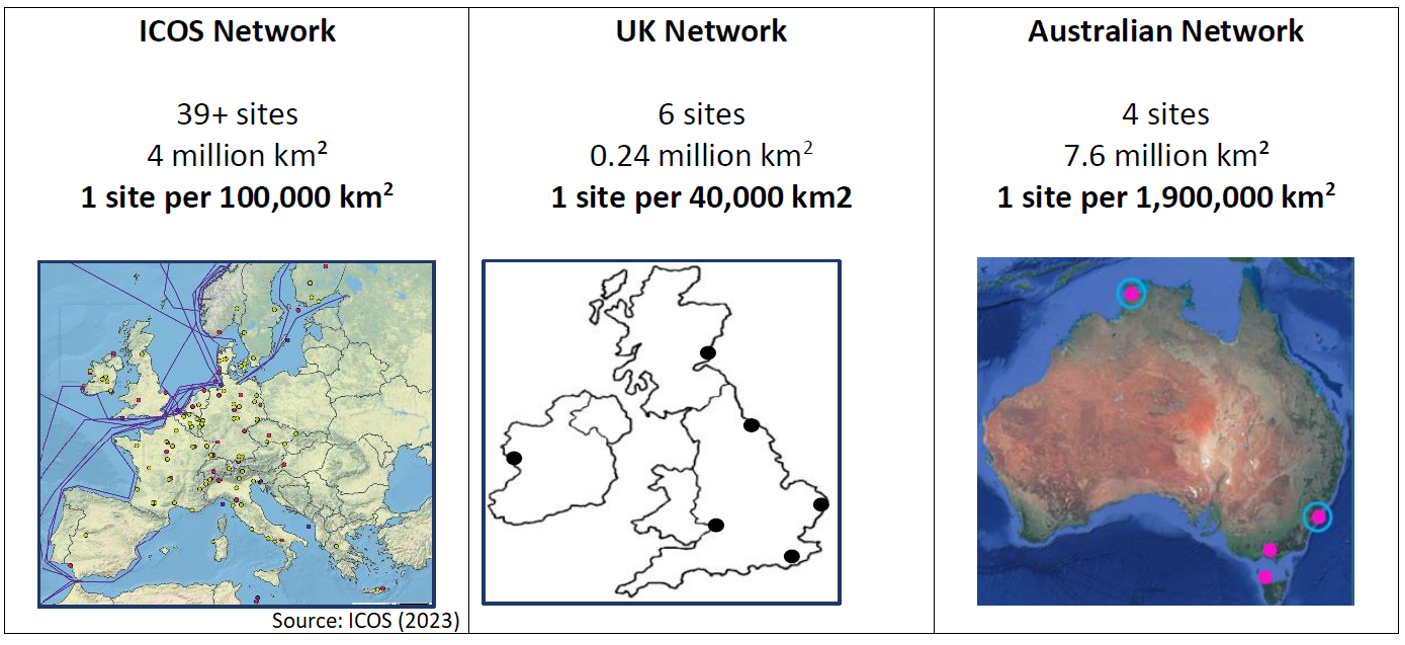Developing an Australian Greenhouse Gas Observing Network (AGGON)
C. Caldow1, R.L. Langenfelds2, Z. Loh2, C.M. Trudinger2, A.R. Stavert1, P.B. Krummel2, E. Guerette2, D.M. Etheridge2, A.K. Luhar1, P.J. Fraser1, B. Mitrevski2, C. Roulston1, J. Ramirez-Gamboa1, N. Shahrokhi1, B. Dunse2, T. Ziehn1 and R.M. Law1
1Commonwealth Scientific & Industrial Research Organisation (CSIRO), Aspendale, VIC 3195, Australia; 029-239-4404, E-mail: christopher.caldow@csiro.au
2Commonwealth Scientific and Industrial Research Organisation (CSIRO), Oceans and Atmosphere, Aspendale, Victoria, Australia
The Paris Agreement has been signed by 195 parties who together account for more than 95% of global greenhouse gas (GHG) emissions. Yet based on current emissions, we’re likely to deplete the remaining carbon budget within the next 10 or 30 years, to increase global average temperatures by 1.5 °C or 2 °C above pre-industrial levels, respectively (Friedlingstein et al. 2022; Liu et al. 2023). Whilst global emissions continue to rise, more than 70 countries now have net zero targets, covering about 76% of global emissions (UN, 2022). Trillions of dollars have already been allocated and invested to reach net zero, with the total amount required estimated in the hundreds of trillions of dollars (IEA 2021; Kumra & Woetzel 2022; United Nations Framework Convention on Climate Change (UNFCCC), 2021). The effectiveness of greenhouse gas mitigation strategies, including the targeting of investment, relies heavily on the accuracy of greenhouse gas accounts. It is therefore essential that these accounts are informed by the most up-to-date science.
Australia’s National Greenhouse Accounts are used to meet emissions reporting requirements under the Paris Agreement, UNFCCC and Kyoto Protocol. These accounts are almost exclusively compiled using ‘bottom-up’ methods, which have been shown to contain significant uncertainty and may not account for potentially large sources (Assan et al. 2022; Dunse et al. 2022; Luhar et al. 2020; Neininger et al. 2021; Sadavarte et al. 2021). Where ‘top-down’ methods have been applied, they have provided invaluable independent assessment of the accuracy of emissions and methodologies included in the national accounts, as well as insights that can be used to improve the national accounts (DISER 2021; 2022). It is for reasons such as these, that IPCC emissions reporting guidelines were revised in 2019 to encourage greater use of top-down methods, and that the WMO have recently proposed an expanded global GHG monitoring system (IPCC 2019; WMO 2023).
The Australian atmospheric science community has established expertise in GHG measurements and inverse modelling of fluxes, and a proven track record in applying top-down methods on global, regional and local scales. However, contributions to national emissions verification are presently limited by sparsity of observations, with only 4 long-term sites covering an area comparable to either Europe or the USA (Figure 1) resulting in a relatively high reliance on satellite and short-term (campaign-based) observations.This presentation will provide an overview of recent and continuing efforts to expand the Australian Greenhouse Gas Observation Network (AGGON) including network design, instrumentation, and resourcing requirements.
Figure 1. Map of atmospheric GHG monitoring networks for Europe (ICOS), the United Kingdom and Australia showing the number of sites relative to land surface area.

